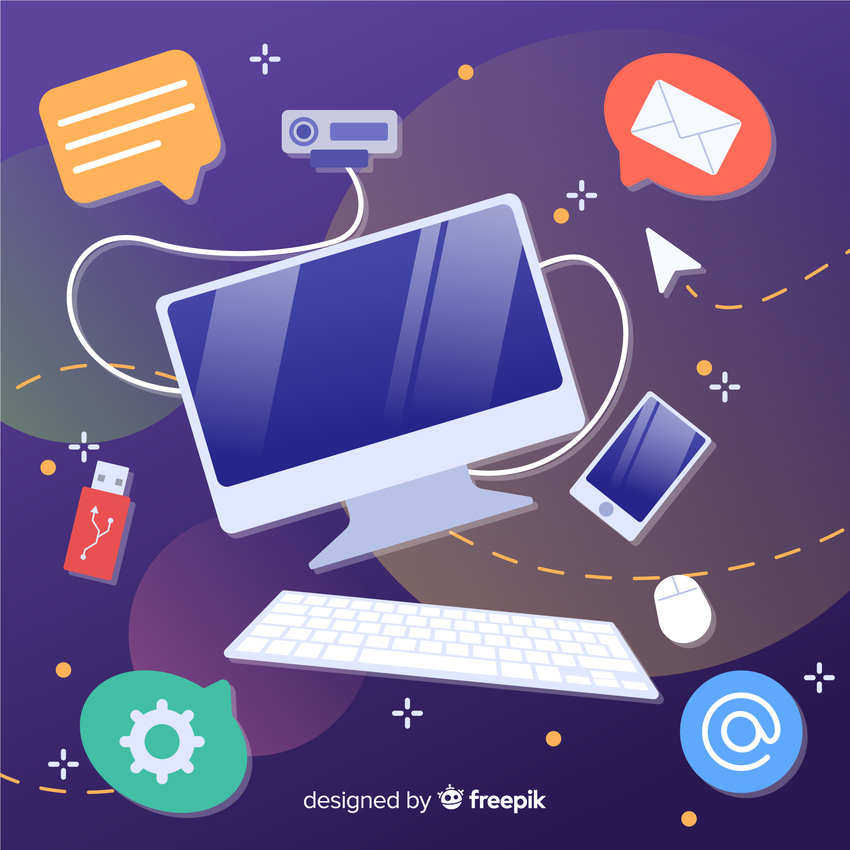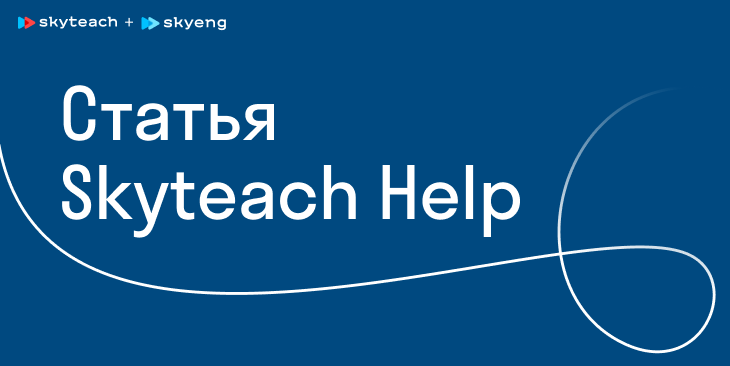Есть ли среди ваших учеников IT-специалисты? Какой контент на английском языке подобрать, чтобы им было полезно? Как разговорить айтишников? Предлагаю готовый план урока по английскому языку для IT-специалистов.
Цель урока: образовательная, практическая.
Задачи:
- Практика лексики, понимание разницы схожих слов.
- Чтение и понимание статьи, работа по тексту.
- Использование лексики в речи и упражнениях на перевод.
Существует стереотип, что IT-специалисты — интроверты, что их очень сложно разговорить. Но зачастую это образованные, очень начитанные люди, которые с радостью поговорят об информационных технологиях, сайтах, компьютерных программах, новых приложениях, сетях, компьютерах, то есть на темы, в которых они чувствуют себя подкованными. Из моего опыта, Technology in English всегда интересна для таких учеников.
Многие из них уже имеют уровень Pre-Intermediate или Intermediate, у них достаточно пассивных знаний и навыков — нужно лишь терпеливо дать им время и возможность выговориться. И необходимо подбирать образовательный контент на английском языке, но знакомый и понятный для них на русском.
Если некоторые IT-термины вам неизвестны, помните, что мы, учителя, исправляем лингвистические ошибки и направляем беседу, поэтому позвольте студентам объяснять вам то, в чем они профи. Это идеальные условия для вывода знаний в речь.
С помощью этого материала вы сможете обсудить базовые понятия в сфере IT и детально поговорить о некоторых функциях, используя лексику, необходимую и полезную для этой сферы.
План урока:
1. Warm-up

- What modern devices help you to interact with your family and friends?
- Where do you usually store your photos?
- Do you print them?
- Do you rewatch your archives?
- Do you sort your files into different folders? Why / why not?
2. Lead-in
What is a database? Can you explain in simple words?
(Let your student provide an explanation.)
Do you agree with this explanation?
Imagine you have a lot of information or data that needs to be stored as well as organized in a way that makes it easy to access or manage. A database is like a digital filing cabinet where you can store or organize your data. It’s a structured collection of related information, just like a collection of files in a real cabinet. This data can be anything: customer information, inventory records, or even your favorite recipe collection.
Now, to effectively manage and interact with this database, we use DBMS, which stands for “database management system”. Think of DBMS as a librarian who helps you access, manipulate the information in the database. It’s software that allows you to create, modify, and query the data in the database.
Еще больше материалов к урокам английского по теме IT:
3. Vocabulary practice
1) Group the words with a similar meaning and make phrases with them.
to store, to query, to order, to retrieve,
to ask, to inquire, to permit,
to keep, to modify, to let, to access,
to change, to alter, to obtain,
to save, to organize, to authorize,
to arrange, to sort, to allow.
• to store, to keep, to save;
• to organize, to arrange, to sort, to order;
• to access, to retrieve, to obtain;
• to allow, to let, to authorize, to permit;
• to modify, to change, to alter;
• to query, to ask, to inquire.
2) Match each word with its definition.
Authentication vs authorization
| Authentication | is a set of rules that DBAs set up to specify the levels of access that individuals or groups of users are allowed to have |
| Authorization | means identification of a user trying to access the database by verifying his username as well as a password |
Authentication means identification of a user trying to access the database by verifying his username as well as a password.
Authorization is a set of rules that DBAs set up to specify the levels of access that individuals or groups of users are allowed to have.
Integrity vs integration
| Integrity | is the process of joining two or more things so that they work together |
| Integration | is the state of a thing which indicates that it is not divided but exists as a whole |
Integrity is the state of a thing which indicates that it is not divided but exists as a whole.
Integration is the process of joining two or more things so that they work together.
Download vs upload vs retrieval
| Download | is a process when you move data from a smaller computer system to a larger one |
| Upload | of data takes place when you find information or data and get it from the memory of a computer or from a disk |
| Retrieval | is an activity when you move data from a large computer system to a smaller one |
A download is an activity when you move data from a large computer system to a smaller one.
An upload is a process when you move data from a smaller computer system to a larger one.
A retrieval of data takes place when you find information or data and get it from the memory of a computer or from a disk.
3) Choose the correct words.
- Authentication/authorization is the ability to confirm the user’s identity.
- Authentication/authorization helps you to establish trust between the parties during any kind of transaction.
- Authorization/authentication is the process of verifying that you have access to something.
- Data integrity/integration means that data available in the database are reliable and correct, without any inconsistencies in data types, legal values, format, key uniqueness and referential integrity.
- In a database management system (DBMS), all database files are integrated/integrity into one system, so there are less redundancies and data management is more efficient.
- Ecological integrity/integration is one major theme.
- This tool enables you to upload/download data from external data resources like databases to Hadoop.
- An in-memory DBMS is a DBMS in which the entire database is stored in RAM instead of SSDs to optimize data storage and speed of data retrieval/upload. A free trial of data backup software is available for upload/download.
Вам могут пригодиться и другие наши планы уроков и упражнения для занятий со взрослыми учениками:
4. Reading for gist
Read the text.
A DBMS provides several important functions:
- Data organization. A DBMS helps organize the data in a structured manner, making it easier to search, sort, and filter information based on specific criteria. It ensures that each piece of data is stored in the right place and can be retrieved efficiently.
- Data retrieval. With a DBMS, you can extract or retrieve specific data from the database based on your needs. For example, you can ask the librarian to find all the books written by a specific author or find all the orders placed by a certain customer.
- Data security. A DBMS helps protect the data from unauthorized access or accidental deletion. It allows you to set up user accounts with different levels of access permissions, ensuring that only authorized individuals can view or modify the data.
- Data integrity. A DBMS enforces rules and constraints to maintain the integrity of the data. It ensures that data entered into the database meets certain criteria, such as data types, valid values, and relationships between different pieces of information. This helps prevent data inconsistencies and maintains the reliability of the database.
- Concurrency control. A DBMS handles multiple users accessing the database simultaneously, ensuring that their interactions do not interfere with each other. It manages concurrent operations and prevents conflicts when multiple users try to access or modify the same data simultaneously.
1) Say if it is true or false.
- A DBMS helps to surf the internet and easily find information. F
- With a DBMS, you can ask for specific data from the database based on your demands. T
- A DBMS helps protect the data from unauthorized access or accidental deletion. T
- A DBMS ensures that data entered into the database meets certain criteria, such as data types, valid values, and relationships between different pieces of information. T
- A DBMS does not allow multiple users accessing the database simultaneously. F
2) Match each word from the left with one from the right to build full expressions from the text.
| multiple access concurrency maintains meet | the reliability control the database certain criteria user |
multiple user, access the database, concurrency control, maintains the reliability, meet certain criteria.
3) Answer the questions based on the text and provide examples from your experience.
- Why is it so easy to find information a person needs?
- Who can have access to data?
- Is it important to provide security of data? Why?
- Is all information in the database arranged? What is it for?
- What does this acronym DBMS stand for? Do you know an equivalent in your native language? What is the tendency of its usage at your work?
4) Let’s translate.
- Аутентификация — это возможность подтвердить личность пользователя.
- Авторизация — это процесс проверки, что у вас есть доступ к чему-то.
- В системе управления базами данных все файлы баз данных объединены в одну систему.
- Этот инструмент позволяет загружать данные из внешних ресурсов.
- Целостность данных означает, что данные, имеющиеся в базе, являются надежными и точными.
5. Sum-up
What you have learned today:
- I know what a database is.
- I can name some important functions of it.
- I know the difference between similar words.
- I can translate and speak using new vocabulary.
















 Вероника Аветисян
Вероника Аветисян 
 Элизабет Мунтян
Элизабет Мунтян 
Феруза, благодарю. У многих преподавателей нет образования в IT сфере, поэтому учимся вместе со студентами, пополняем свой словарный запас и это как раз та тема, где ученики говорят, а мы держим фокус на правильности грамматике. Век живи, век учись!
Очень интересный. Я даже узнала некоторые слова которые не знала честно. Спасибо большое ❤️